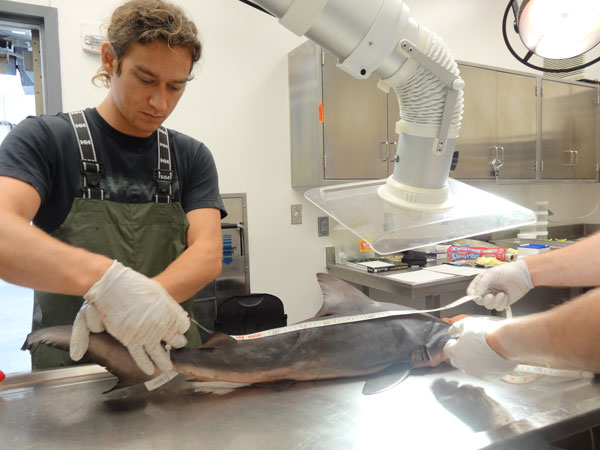Movement, Connectivity, & Feeding Ecology of Bull Sharks
Bull sharks are large apex predators occurring in tropical coastal waters across the globe, including the Gulf of Mexico. Among sharks and rays, bull sharks are notable for their ability to inhabit waters across the entire marine-freshwater continuum. For the first several years after birth, juveniles are thought to remain in brackish estuarine nurseries, exploiting the natural refuge of shallow embayments and the increased prey availability of these highly productive systems. However, it remains unclear how anthropogenic stressors prevalent in coastal systems (e.g. climate change, coastal development, fishing pressure) might affect juvenile sharks reliant upon these habitats. We require a better understanding of the relative value of individual habitats across multiple spatial scales to better predict the impacts of such perturbations at the population and ecosystem levels. The Texas coast spans a large physicochemical and biogeographic gradient along the Gulf of Mexico, and thus represents a unique system in which to address questions regarding patterns in space use and feeding ecology of bull sharks along the Texas coast. In this study we use a combination of natural tracers, electronic tagging, and stomach content analyses to identify the relative importance of specific nursery habitats, examine spatiotemporal patterns in space use in Texas estuaries, and to characterize and compare the feeding dynamics of juvenile bull sharks among these estuarine systems.
